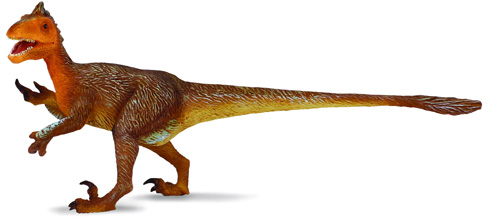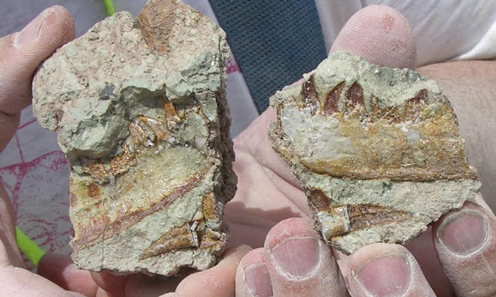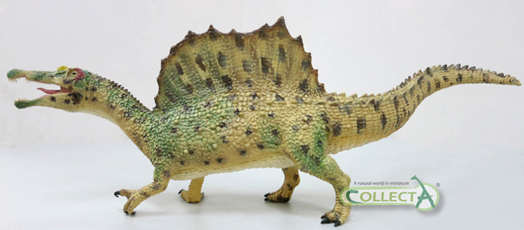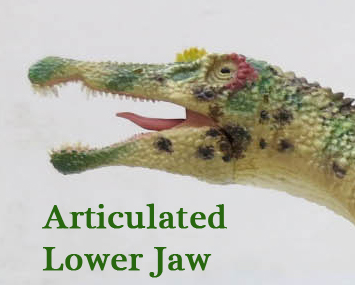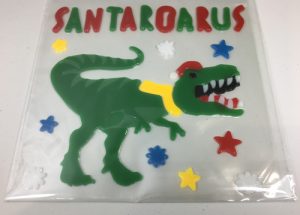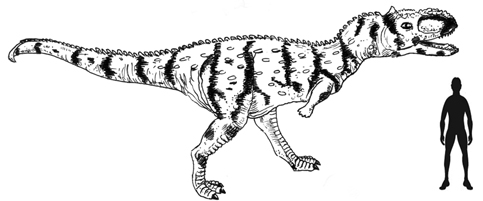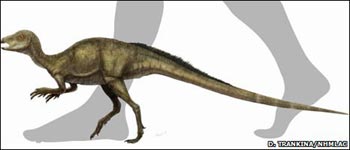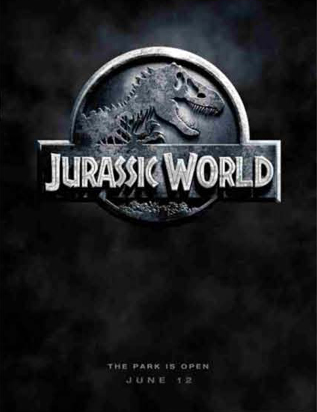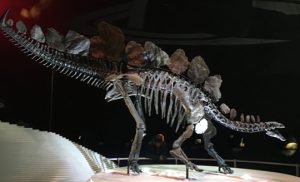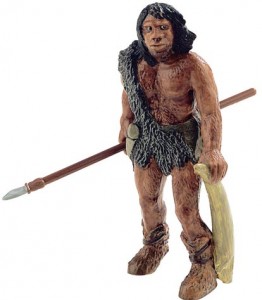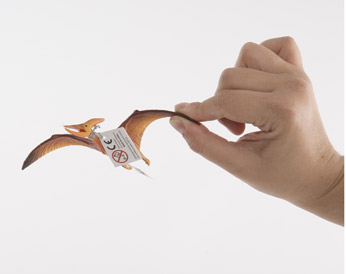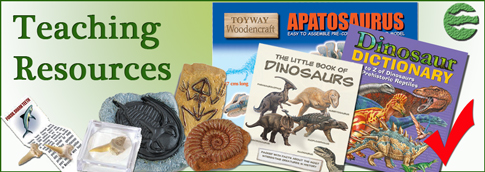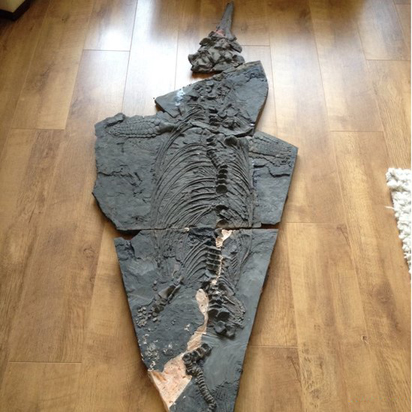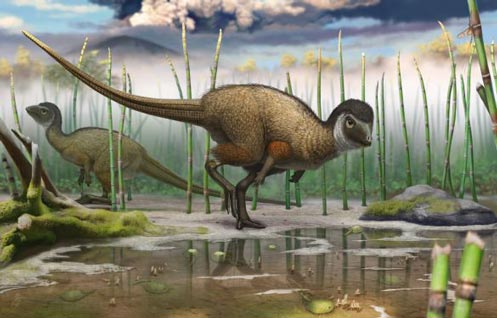One Nine Tonne Block Potentially Six Plus Utahraptors
Utahraptor Predator Trap Promises Fresh Insight into Dromaeosaurs
Lots of media coverage in the last few days concerning the efforts of a research team from Utah and their remarkable work to remove a nine tone block of mixed mudstone and sandstone that may contain the fossilised remains of a pack of Utahraptors from an isolated Mesa located in the Arches National Park (eastern Utah). The block is believed to represent what is known as a “predator trap” and it may contain the fossilised remains of six Utahraptors, a fleet-footed, feathery hunter, related to the Velociraptor of Mongolia, but much, much bigger.
Utahraptor Predator Trap
If the sandstone/mudstone block can be prepared, then palaeontologists will be able to gain further information about the growth habits (ontogeny) of these theropod dinosaurs. It may be difficult to ascertain whether the fossils represent a pack of dinosaurs that perished together, or whether the concretion represents the demise of a number of dinosaurs over a prolonged period, i.e. individual dinosaurs becoming fatally trapped rather than the whole group succumbing together.
The Fearsome Utahraptor ostrommaysi
Utahraptor is the largest genus of dromaeosaur described to date. Although regarded by many scientists as being the “Arnold Schwarzenegger” of this particular type of meat-eating dinosaur, it was very typical of the group. It was a fast running, bipedal predator and most likely feathered. Adults reached lengths of around five and a half metres with a skull length in excess of fifty-five centimetres.
The sickle-shaped second toe claw was up to thirty-eight centimetres long and like other “raptors”, palaeontologists have postulated that Utahraptor could lift up its sickle claw whilst running, with toes three and four bearing the weight of the animal. Utahraptor was named and described in 1993, one of the scientists involved in the formal scientific description was James Kirkland.
James Kirkland, now one of the best known American palaeontologists, was leading a field trip involving University of Utah students back in 2001, when the first dinosaur bone, a leg bone was found indicating that a site on a 240 metre high Mesa in the Arches National Park, might yield an exciting dinosaur discovery.
The Location of the Utahraptor Fossils
Picture credit: James Kirkland/St. George News
The inset and the red arrow indicates the location of the fossil find on the Mesa which is managed by the U.S National Parks Service. Removing fossils from such locations is prohibited without special permits issued by the Government.
An Illustration of a Fearsome Utahraptor
Picture credit: Everything Dinosaur
For models and replicas of dromaeosaurid dinosaurs: CollectA Prehistoric Life Models and Figures.
Further expeditions to the site, indicated that this was something special. Back in 2004, it was confirmed that there was a mass of disarticulated and associated fossil bones preserved and over the last decade or so, the on-going investigation led scientists to believe that the best option was to remove the majority of the fossils in one massive block. The excavation culminated in the removal of an 18,200 lb mass of boulders, carefully protected by burlap and plaster. It was a tricky job negotiating the steep slopes of the Mesa but after heavy plant was brought in the huge rock was loaded onto a low loader for transportation to the Utah Department of Natural Resources (Salt Lake City).
One of the Utahraptor Jawbones Found at the Site
Picture credit: James Kirkland/St. George News
Commenting on the fossils, which may represent at least six different aged Utahraptors, James Kirkland (Adjunct Associate Professor, University of Utah) stated:
“We realised all the raptors were intertwined. As we tried to separate the bones from the ground, we kept running into more skeletons. We ended up with a giant mass.”
Amongst the fossil material listed so far is a nearly two foot long adult skull, along with elements from a baby Utahraptor’s ten centimetre long skull. These fossils will help scientists to work out how these animals changed as they grew and developed. This discovery, part of an extremely rich fossil heritage from the American State has been described as a “Rosetta stone of dinosaur fossil hunting for Utah.”
A Predator Trap?
In conjunction with the Utahraptor remains, scientists have uncovered fragmentary fossils of a herbivorous iguanodontid. It has been proposed that the stench of the rotting carcase of the herbivore attracted the predators who were hoping to scavenge on the rotting corpse. However, these creatures too, become stuck in what was effectively quicksand and what killed them helped preserve their bodily remains. Predator traps occur when large number of meat-eaters congregate around the corpse of a prey animal that has become stuck in mud or quicksand.
A number of predator traps are known from the fossil record, the Early Cretaceous tyrannosauroid Guanlong has been associated with a predator trap, the tar pits at La Brea (Los Angeles), are effectively one huge predator trap, they still catch out unwary birds and small mammals today.
To read an article about how scientists think large dinosaur footprints could have proved deadly for smaller animals: Did Dinosaur Footprints Trap Small Animals?
Commenting on the Utahraptor fossil discovery, a spokesperson for Everything Dinosaur stated:
“These fossils represent a remarkable opportunity for palaeontologists to learn about one of the most formidable predators of the Cretaceous. Around 120 million years ago, this part of what is now the desert of Utah, was covered in a series of large and often seasonal lakes. As the water evaporated over the long, dry season, so herbivorous dinosaurs would run the risk of getting stuck in the mud and soft sand on the shore. With water seeping away from such sites, quicksand was quickly formed and these would ensnare unwary dinosaurs.”
The spokesperson went onto add:
“It will be difficult for the scientists to state with any degree of certainty whether or not this fossil site provides evidence of pack behaviour in Dromaeosaurs, but we suspect that the debate over this type of dinosaur behaviour, already inferred by other fossil finds, will come to fore once more.”



